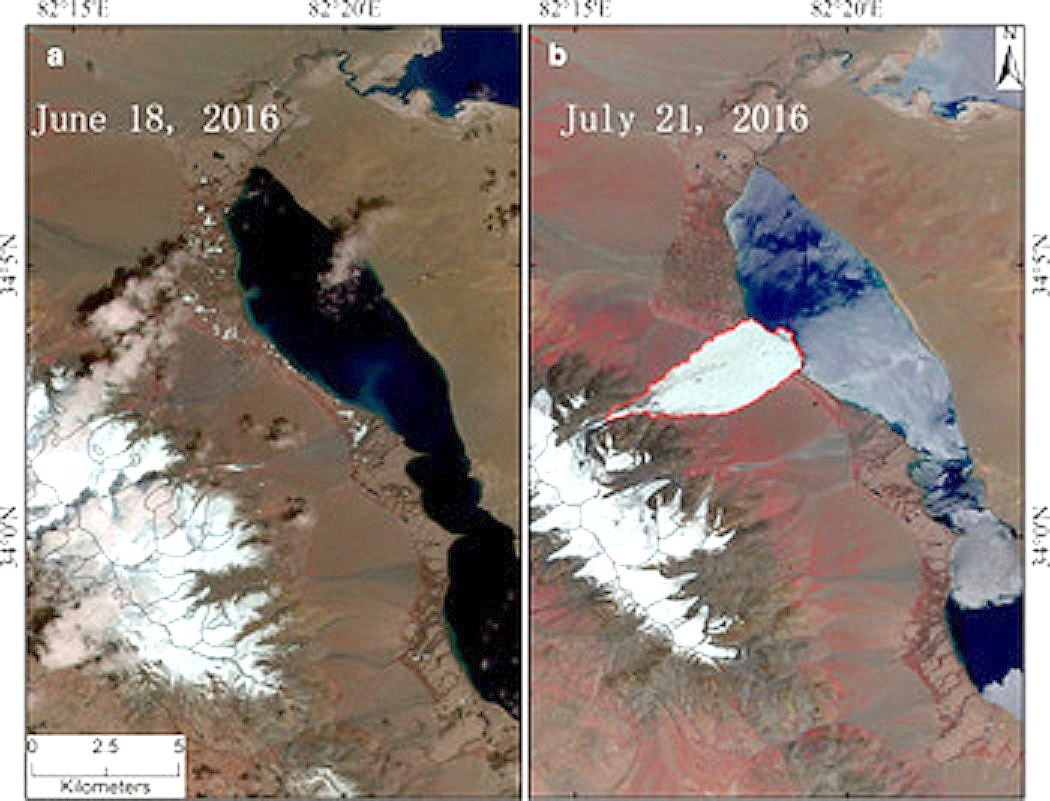Surging Glaciers, Climate Change, and the Tibetan Plateau
Tibetan glacial surges, July to October 2016 (credit: NASA Terra)
Previously, this Journal has shown remote-sensing, satellite imagery of glacial surges in Tibet. The rapid collapse of stationary ice puzzled geologists and other researchers but climate change was suspected. It now has been identified as the culprit and has caused other impacts to the high plateau of rural Tibet. Publishing in Nature Geoscience, researchers from the University of Oslo and elsewhere conclude:
"the detachment of entire parts of two glaciers in western Tibet led to an unprecedented pair of giant, low-angle, ice avalanches. Using satellite imagery, numerical modeling, and field investigations, we find that the ice collapses were caused by climate-change and weather-driven forces, acting on polythermal ice (ice temperatures mixed internally) and soft glacier-bed properties. These factors converged to produce surge-like driving stresses and reduced glacier base friction exceeding collapse thresholds of ice frozen to their bed. These catastrophic glacial instabilities can happen without historical precedent."

Tibetan Plateau Rotung glacier surge (credit: NASA)
As atmospheric temperatures increase, air can physically carry more water. This hydrology drives increasingly powerful storms and rainfall. When seasonal monsoons cross the Plateau (the Third Pole), this added moisture is deposited as increased snow and rainfall in the highest mountains. The two glaciers received both snow and rain at different seasons that year. Snow increases the glacier's mass while the rain fell on its surface entering ice cracks (crevasse) sending water downwards to its base. The water served as a lubricant on the underlying bedrock consisting of sandstone, clay, and silts. The dual climate impacts created a situation where ice mass, bedrock lubrication, and slope angle crossed a 'tipping point' and the glacier's stability collapsed in a massive surge.
A conference organized by Columbia University offers a wide-ranging conversation on what is unfolding on the Tibetan Plateau and why it is so important for the region's water situation. WHB